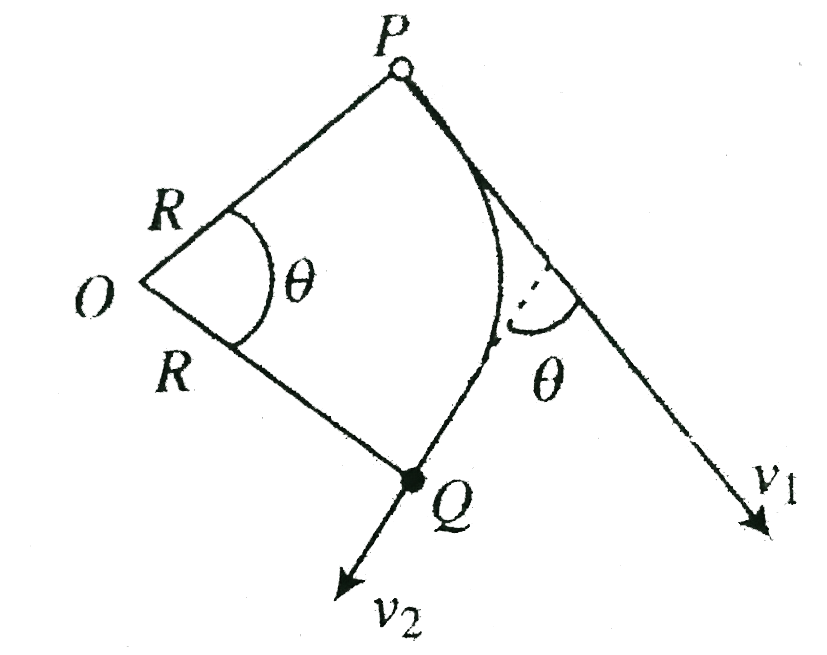the circular motion of a particle with constant speed is
Simple harmonic but not periodic
Periodic and simple harmonic
neither periodic nor simple harmonic
periodic but not simple harmonic
The correct Answer is:d
To analyze the circular motion of a particle with constant speed, we can break down the problem into several steps:
1. Understanding Circular Motion:
- A particle moving in a circular path is undergoing circular motion. In this case, the motion is described as uniform circular motion because the speed of the particle remains constant.
2. Defining Key Terms:
- Speed: The magnitude of the velocity of the particle, which remains constant in this scenario.
- Velocity: A vector quantity that has both magnitude and direction. Although the speed is constant, the direction of the velocity vector changes continuously as the particle moves along the circular path.
3. Centripetal Acceleration:
- Even though the speed is constant, the particle experiences centripetal acceleration directed towards the center of the circular path. This acceleration is responsible for changing the direction of the velocity vector.
- The formula for centripetal acceleration (ac) is given by:
ac=v2r
where v is the constant speed and r is the radius of the circular path.
4. Centripetal Force:
- To maintain circular motion, a net inward force (centripetal force) is required. This force can be provided by tension, gravity, friction, or any other force depending on the context.
- The net centripetal force (Fc) is given by:
Fc=m⋅ac=m⋅v2r
where m is the mass of the particle.
5. Conclusion:
- The motion of the particle is classified as uniform circular motion because it travels along a circular path at a constant speed, but with a continuously changing velocity due to the change in direction.
- A particle moving in a circular path is undergoing circular motion. In this case, the motion is described as uniform circular motion because the speed of the particle remains constant.
- Speed: The magnitude of the velocity of the particle, which remains constant in this scenario.
- Velocity: A vector quantity that has both magnitude and direction. Although the speed is constant, the direction of the velocity vector changes continuously as the particle moves along the circular path.
- Even though the speed is constant, the particle experiences centripetal acceleration directed towards the center of the circular path. This acceleration is responsible for changing the direction of the velocity vector.
- The formula for centripetal acceleration (ac) is given by:
ac=v2r
where v is the constant speed and r is the radius of the circular path.
- To maintain circular motion, a net inward force (centripetal force) is required. This force can be provided by tension, gravity, friction, or any other force depending on the context.
- The net centripetal force (Fc) is given by:
Fc=m⋅ac=m⋅v2r
where m is the mass of the particle.
- The motion of the particle is classified as uniform circular motion because it travels along a circular path at a constant speed, but with a continuously changing velocity due to the change in direction.
Topper's Solved these Questions
Similar Questions
Knowledge Check
the circular motion of a particle with constant speed is
ASimple harmonic but not periodicBPeriodic an simple harmonicCNeither periodic nor simple harmonicDPeriodic but not simple harmonicIn circular motion of a particle,
Aparticle cannot have uniform motionBparticle cannot have uniformly acceleration motionCparticle cannot have net acceleration equal to zeroDparticle cannot have any force in tangential directionIn uniform circular motion of a particle
Avelocity is constant but acceleration is variableBvelocity is variable but acceleration is constantCboth velocity and acceleration is variableDspeed is constant but acceleration is variable
A particle describes an angle θ in a circular path with a constant speed v. Find the a charge in the velocity of the particle and b average acceleration of the particle during the motion in the curve (circle).
 .
.
View SolutionAssertion : In uniform circular motion speed of particle must be constant.
Reason : In uniform circular motion no force or acceleration is acting on particle acting parallel or in anti parallel to the direction of velocity.
View SolutionIf the kinetic energy of a particle moving with a constant speed on a circular path of radius 4 m is 100 j .Then the centripetal force will be
View SolutionA particle is moving on a circular path of radius R with constant speed v. During motion of the particle form point A to point B

View SolutionA particle is moving on a circular track of radius 30 cm with a constant speed of 6ms−1. Its acceleration is
View Solution
